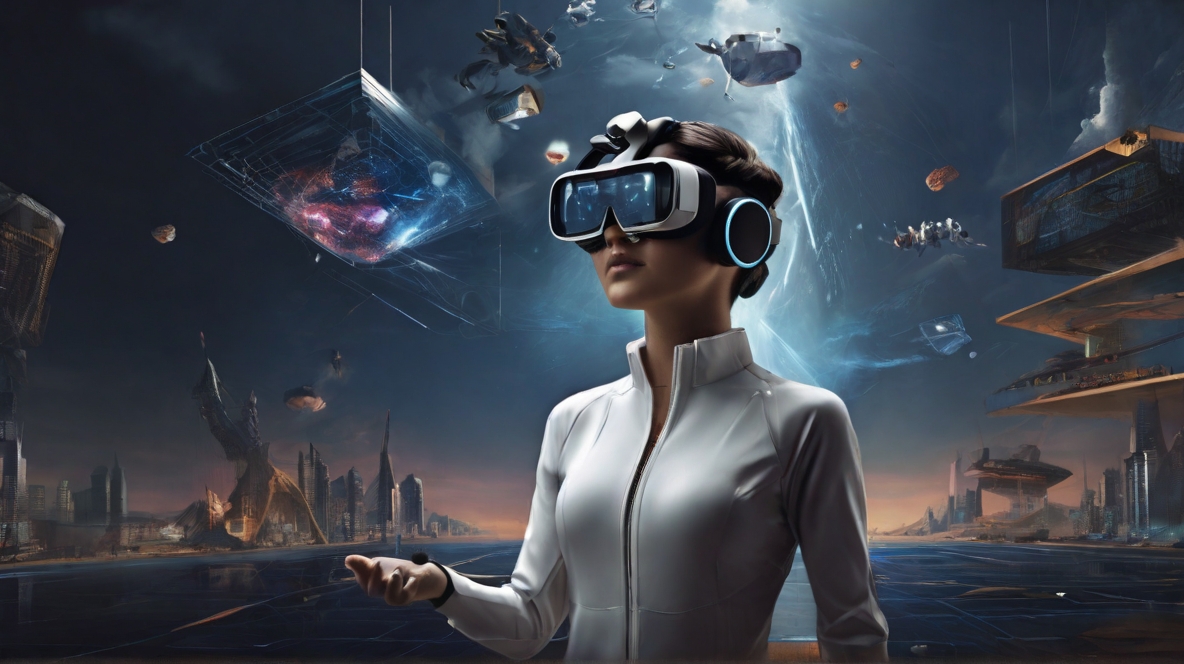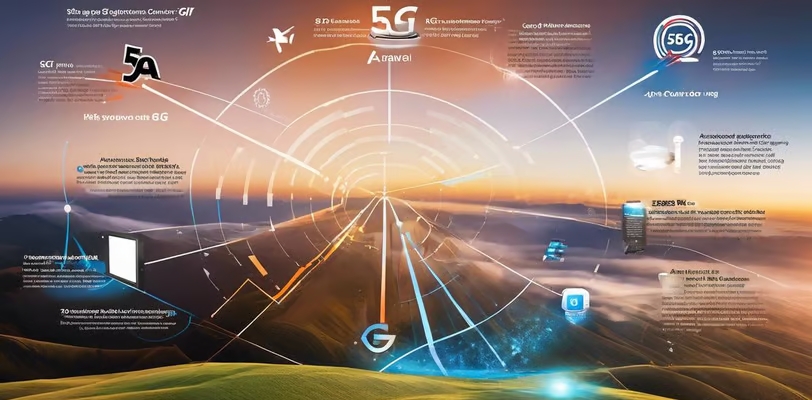Navigating the Evolving Landscape of Augmented and Virtual Reality in 2024
In the swiftly changing realm of technology, Augmented Reality (AR) and Virtual Reality (VR) are continually intriguing minds and reshaping our interaction with the digital sphere. As we stand on the cusp of 2024, these immersive technologies are undergoing rapid advancements, significantly influencing various sectors from gaming to healthcare. This article delves into the present state and future outlook of AR and VR, exploring the most recent hardware and software innovations, applications across diverse industries, and contemplating the limitless potential that lies ahead.
The Current Tech Scene: AR and VR Technologies in 2024
1. Progress in AR Hardware:
- In the AR domain, hardware innovations are redefining user experiences. Sleek and functional smart glasses are progressing beyond conceptual phases, with industry giants like Apple, Google, and Microsoft investing heavily in AR glasses to seamlessly integrate digital information with the physical world.
2. Revolutionized VR Headsets:
- VR headsets have witnessed significant improvements in resolution, field of view, and comfort. Devices such as the Oculus Quest series and Valve Index showcase the industry’s commitment to delivering immersive VR experiences. Features like wireless capabilities, hand tracking, and advanced haptic feedback systems are becoming standard, creating a more natural interaction with virtual environments.
3. AR Software Evolution:
- AR software has evolved from basic overlays to advanced applications that seamlessly merge digital and physical realities. Platforms like ARKit and ARCore from Apple and Google empower developers to create immersive AR experiences for smartphones and tablets. AR is no longer a niche; it has become a ubiquitous layer enhancing our daily lives.
4. Flourishing VR Software Ecosystems:
- The VR software landscape is flourishing with an abundance of content across genres. Gaming remains a primary focus, with VR titles pushing the boundaries of storytelling and interactivity. VR applications for productivity, collaboration, and education are expanding, driven by advancements in software capabilities and user-friendly interfaces.
Applications Across Industries: AR and VR Making an Impact
1. Gaming Innovations:
- In gaming, AR and VR are pushing the limits of immersive experiences. AR-enhanced mobile games like Pokémon GO have paved the way for interactive and location-based gaming. VR is witnessing a surge in realistic simulations, social VR experiences, and innovative game mechanics leveraging the unique capabilities of virtual environments.
2. Educational Transformations:
- AR and VR are transforming education by bringing abstract concepts to life. AR applications overlay information in real-time, making learning interactive and engaging. VR offers virtual field trips, historical recreations, and hands-on experiences that transcend traditional classroom limitations.
3. Healthcare’s Technological Leaps:
- The healthcare sector is leveraging AR and VR for diagnostics, treatment, and training. AR-assisted surgeries provide surgeons with real-time data, enhancing precision. VR is being used for therapeutic applications, such as pain management, mental health treatments, and exposure therapy. These technologies are integral components of modern healthcare practices.
4. AR in Architectural Visualization:
- Architects and designers use AR to visualize projects in the real world. AR applications enable professionals to overlay 3D models onto physical spaces, allowing clients and stakeholders to experience designs in situ. This technology streamlines the design process and enhances communication within the industry.
5. Retail and E-Commerce Experiences:
- AR is revolutionizing the retail sector by providing customers with interactive and personalized experiences. Virtual try-ons, AR-powered shopping assistants, and in-store navigation apps enhance the retail journey. VR contributes to virtual storefronts and immersive shopping environments, bridging the gap between physical and online retail.
Future Outlook: Contemplating Uncharted Territories
1. Convergence of AR and VR:
- As hardware capabilities improve, a convergence of AR and VR technologies is anticipated. Devices that seamlessly transition between augmented and virtual experiences, catering to a spectrum of user preferences, are likely to emerge. This convergence could redefine how we perceive and interact with mixed realities.
2. Enhanced Interactivity with AI Integration:
- The integration of Artificial Intelligence (AI) is poised to elevate the interactivity of AR and VR experiences. AI algorithms adapting and responding to user behavior could create dynamic and personalized environments, particularly in gaming, simulations, and educational applications.
3. Rise of Spatial Computing:
- Spatial computing, combining physical and digital spaces, is expected to gain prominence. AR and VR technologies will evolve to understand and interact with the physical world more intuitively. This evolution could lead to more natural gestures, improved object recognition, and enhanced spatial awareness, creating a seamless blend of the digital and physical realms.
4. Accelerated Enterprise Adoption:
- The enterprise sector is likely to witness accelerated adoption of AR and VR for training, remote collaboration, and data visualization. Industries like manufacturing, logistics, and maintenance will leverage immersive technologies to enhance efficiency and reduce operational costs.
5. Accessibility and Affordability:
- Increasing accessibility and affordability of AR and VR devices will drive widespread adoption. Technological advancements and market competition are expected to lower costs, making immersive experiences accessible to a broader audience.
In Conclusion: Charting the Course for the Future
As we navigate the ever-evolving landscape of AR and VR, 2024 promises to be a pivotal year. The convergence of cutting-edge hardware, innovative software, and diverse applications across industries is reshaping our perception and interaction with digital information. From gaming to healthcare, education to retail, the impact of these immersive technologies is profound and far-reaching.
Venturing into the uncharted territories of the future requires adaptability, curiosity, and a willingness to explore the limitless possibilities that lie ahead. AR and VR are not just technologies; they are gateways to new realms of experience, creativity, and innovation. Navigating this immersive future requires an open mind and an appreciation for the boundless potential that awaits. Welcome to the evolving world of AR and VR in 2024 and beyond.









